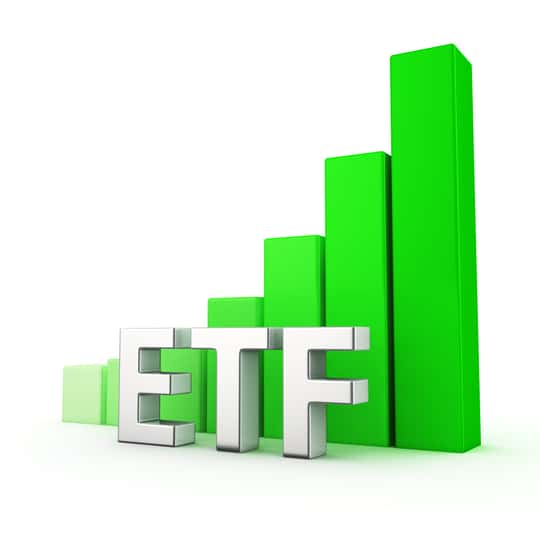Despite significant progress, inflation continues to stay above the Fed’s 2% target, and it will be likely for the central bank to raise interest rates further and hold them at a restrictive level for some time. Amid the uncertainty around the Fed’s monetary policy, ongoing government dysfunction, and other macroeconomic challenges, the stock market could remain highly volatile.
Amid this backdrop, best-performing bond ETFs iShares 1-3 Year Treasury Bond ETF (SHY) and iShares Treasury Floating Rate Bond ETF (TFLO) could be ideal investments now for instant diversification and steady returns.
Inflation posted its biggest monthly gain of 2023 in August as consumers faced higher prices on energy and various other items. The Consumer Price Index (CPI) grew 0.6% for the month and was up 3.7% year-over-year. Economists surveyed by Dow Jones estimated respective increases of 0.6% and 3.6%.
The Federal Reserve has raised rates 11 consecutive times since March 2022, bringing its benchmark interest rate to the 5.25%-5.50% range, the highest level in 22 years. As a result of the Fed’s tighter monetary policy, inflation has sharply moved down to 3.7% at last read from its peak of 9.1% in June last year, but it still exceeds the Fed’s target of 2%.
Meanwhile, stronger-than-expected jobs data has aggravated anxiety that the Fed will decide to keep interest rates higher for longer. As per data from BLS’ monthly Job Openings and Labor Turnover Survey (JOLTS) report, there were an estimated 9.61 million job openings in August, up from July’s 8.92 million. Economists were looking for 8.8 million job openings.
While Fed officials opted to hold the benchmark federal funds rate steady at its meeting in September, most indicated that another rate hike would likely be needed before the year-end.
“I remain willing to support raising the federal funds rate at a future meeting if the incoming data indicates that progress on inflation has stalled or is too slow to bring inflation to 2% in a timely way,” said Fed Governor Michelle Bowman.
Also, Cleaveland Fed leader Loretta Mester said the Fed’s work is likely not done. “I suspect we may well need to raise the fed funds rate once more this year and then hold it there for some time as we accumulate more information on economic developments and assess the effects of the tightening in financial conditions that has already occurred,” Mester added.
Amid the Fed’s likelihood to keep rates higher for longer, government dysfunction, geopolitical instability, and other macro headwinds, the stock market will likely face enhanced volatility in the near term. Amid this, investors could consider taking refuge in bond ETFs. These ETFs provide immediate diversification and a regular stream of income.
In light of these encouraging trends, let’s look at the fundamentals of the two best Government Bonds ETFs, beginning with number 2.
Stock #2: iShares Treasury Floating Rate Bond ETF (TFLO)
TFLO seeks to track the investment results of a market value-weighted index composed of U.S. Treasury floating rate bonds, whose interest payments adjust to reflect changes in interest rates. Investors could use this fund to put cash to work, seek stability, and manage interest rate risk.
TFLO tracks the Markit iBoxx USD Liquid High Yield 0-5 Index. The fund has assets under management (AUM) of $10.53 billion. It currently has a total of 9 holdings.
The fund’s top holdings include Government of the United States of America FRN 31-OCT-2024 with a 19.07% weighting, United States Treasury Notes FRN 31-JUL-2024 at 13.96%, followed by Government of the United States of America FRN 31-OCT-2023 with a 13.89% weighting.
TFLO has an expense ratio of 0.15% compared to the category average of 0.16%. Over the past six months, its fund inflows came in at $4.88 billion, and $7.11 billion over the past year. Also, the ETF has a beta of negative 0.06.
The fund pays an annual dividend of $2.26, translating to a 4.47% yield at the prevailing price level. Its dividend payouts have grown at an 80.9% CAGR over the past three years and a 23.8% CAGR over the past five years. The fund’s four-year average yield is 4.47%.
TFLO has gained marginally over the past six months to close the last trading session at $50.54. It has a NAV of $50.52 as of October 4, 2023.
TFLO’s POWR Ratings reflect this promising outlook. The fund’s overall A rating equates to a Strong Buy in our proprietary rating system. The POWR Ratings are calculated by considering 118 different factors, with each factor weighted to an optimal degree.
The fund has an A grade for Trade, Peer, and Buy & Hold. Of the 40 ETFs in the B-rated Government Bonds ETFs group, it is ranked #7.
To access all TFLO’s POWR Ratings, click here.
Stock #1: iShares 1-3 Year Treasury Bond ETF (SHY)
SHY provides exposure to U.S. Treasury bonds with remaining maturities between one and three years. The fund is a powerhouse in its segment, a stable, liquid vehicle for buy-and-hold investors and short-term traders. Additionally, it is a well-managed fund that tracks its index tightly and without significant volatility.
SHY tracks the ICE BofA US Treasury Bond (1-3 Y) Index. With $39.04 billion in AUM, its top holdings are United States Treasury Notes 4.5% 15-NOV-2025 with a 5.26% weighting in the fund, followed by United States Treasury Notes 4.0% 15-FEB-2026 at 4.92%, and United States Treasury Notes 1.5% 30-NOV-2024 at 3.85%.
The fund has a total of 85 holdings, with its top 15 assets comprising 49.04% of its AUM.
The fund has an expense ratio of 0.15%, lower than the category average of 0.16%. Its fund inflows were $695.44 million over the past five days and $363.87 million over the past month.
SHY pays an annual dividend of $2.20, which translates to a 2.73% yield at the current price level. The fund’s dividend payouts have grown at a 25.3% CAGR over the past three years and an 11.4% CAGR over the past five years. Its four-year average yield is 1.18%.
The fund has gained marginally over the past three months to close the last trading session at $80.80. It has a beta of 0.01. The fund’s NAV was $80.75 as of October 4, 2023.
SHY’s solid fundamentals are reflected in its POWR Ratings. The fund has an overall rating of A, which translates to a Strong Buy in our proprietary rating system.
The fund has an A grade for Trade and Buy & Hold and a B for Peer. It tops the list of 40 ETFs in the same group.
Click here to see all the SHY ratings.
What To Do Next?
Discover 10 widely held stocks that our proprietary model shows have tremendous downside potential. Please make sure none of these “death trap” stocks are lurking in your portfolio:
Want More Great Investing Ideas?
SHY shares rose $0.03 (+0.04%) in premarket trading Thursday. Year-to-date, SHY has gained 1.67%, versus a 12.28% rise in the benchmark S&P 500 index during the same period.
About the Author: Mangeet Kaur Bouns

Mangeet’s keen interest in the stock market led her to become an investment researcher and financial journalist. Using her fundamental approach to analyzing stocks, Mangeet’s looks to help retail investors understand the underlying factors before making investment decisions. More...
More Resources for the Stocks in this Article
| Ticker | POWR Rating | Industry Rank | Rank in Industry |
| SHY | Get Rating | Get Rating | Get Rating |
| TFLO | Get Rating | Get Rating | Get Rating |






